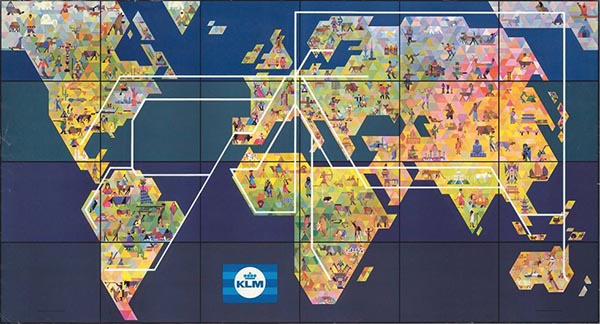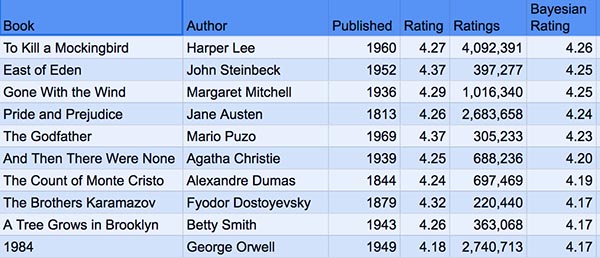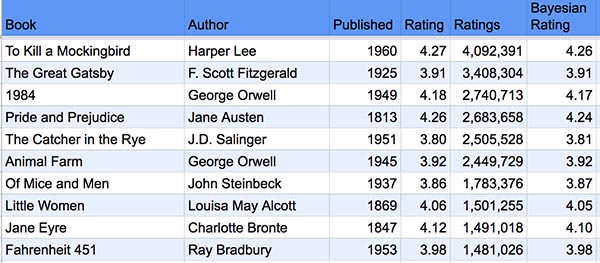The Daniel K. Inouye Solar Telescope has taken its first image of the Sun, a detailed view of our star's boiling gases that far surpasses what was possible before. Science operations are set to begin later this year. https://t.co/2XPvoQ3BaO pic.twitter.com/oucJ3rbXYC
— Sky & Telescope (@SkyandTelescope) January 30, 2020
That Sucks
According new market research the report “Paper Straw Market by Material Type (Virgin paper, Recycled Paper), Product Type (Printed, Non Printed), Straw Length , Straw Diameter, End use Application (Food Service, Institutional, Household), Region - Global Forecast to 2024”,
the paper straw market is projected to grow from USD 585 million in 2019 to USD 1,687 million by 2024, recording a CAGR of 23.6% during the forecast period. The rising demand for sustainable, single-use disposable products & solutions in various end-user industries, such as foodservice, institutional, and household, and the increasing government reforms & campaigns to ban the use of plastics, are factors that are projected to drive the growth of the paper straw market across the globe. Moreover, the adoption & demand from consumers for the sustainable & environment-friendly straws boost the market further.
Why We Need Straws
It is estimated that 163,000 pints of Guinness are lost each year by being absorbed into facial hair: the average drinker takes 10 sips to sink a pint, of which 0.56 millilitres is trapped in the average moustache at each sip.
— Quite Interesting (@qikipedia) January 24, 2020
Love Meetings In an Elevator
There are many reasons to take the stairs rather than an elevator, but the headquarters of Dutch investment management group Amvest offers a pretty compelling one. Via Core 77: “The building only has five floors, and the elevator is programmed to move extremely slowly up and down the building's face. Why slowly? Because it is intended to host meetings--standing meetings, obviously, as there are no conference tables--and while it gives you enough time to cover some talking points, there is a clear end to the journey, unlike a lot of corporate meetings I've been in.”
Fair Point
then how come there are new generations https://t.co/EOXcNX1uR4
— Emo Philips (@EmoPhilips) January 25, 2020
Route of Evil
Here’s a point in a print newspapers’ favor. From the (Vancouver) Times Colonist:
Vince Cocoroch, who has delivered the newspaper since 1997, was driving through Duncan when he spotted the fire on the side of the Green Leaf Bistro about 2 a.m. Cocoroch phoned 911 to report the fire because the flames were starting to spread from the plastic sign to the structure itself.
He then started snuffing out the flames himself while he waited for help to arrive.
See? If no one subscribed to that print newspaper, the Green Leaf Bistro might have burned to the ground.
Big Wheel
Whenever I see someone on one of these, I like to imagine they started out with a much larger vehicle and their journey has been riddled with mishaps. pic.twitter.com/GcAhhONDHY
— Tom Burgess (@Tomb_Urges) January 30, 2020
Floating Fashion
OK, make sure you have swallowed your coffee before you scroll down to reveal the next image, because you don’t want to have to hose off your screen and keyboard like we did when we clicked this link...
Fredrik Tjærandsen is a Norwegian fashion designer and visual artist who designed a collection—presented at Central Saint Martins, the London art college—that, says Boing Boing, “featured inflatable latex balloons around models’ arms, legs, and torsos. Some of the pieces transformed into somewhat more conventional latex dresses as models floated down the runway.”

Don’t say you weren’t warned.
Plane Awful
THE FEET ARE ALL TOUCHING NO NO https://t.co/7wVZ8NTlap
— Brock Wilbur (@brockwilbur) January 28, 2020
Map My Flight
In this age of Internet booking and Travelocity—and those animated maps on airplane seat backs—few of us ever have any contact with old, printed airline maps the way people used to. Which is all the more reason to check out a new book called Airline Maps: A Century of Art and Design by Mark Ovenden and Maxwell Roberts. Airline maps didn’t need to be specific or even geographically accurate; as a result, artists and designers could unleash their creativity in ways matched only by those who devise airline fare structures.
A new branch of cartography took off with the dawn of civil aviation a century ago. Airline maps were completely different from what came before, such as navigational maps used by pilots or even railroad route maps for train riders. Airline passengers did not need to know many specific details about their journey. All they were involved with were the airlines' departure and arrival cities. To those with a fear of flying, perhaps the lack of detail was a clever psychological trick to entice them onto the fastest-moving machine ever invented.
Pop Matters has an excerpt.

Courtesy of KLM (page 131) (via Penguin Books)
Hi-Yo, Silver, Away!
50 Shades of Grey sold so many copies that for a while the UK ran out of silver ink to put on the cover.
— Quite Interesting (@qikipedia) January 27, 2020
Picture Book
Looking for the perfect gift for...hmm...not sure, really. Dr. Joe? But then, who wouldn’t want a coffee table book collection of photographs of economists?

We’ll wait for the swimsuit calendar.
Off-the-Shelfie
#magicofstorytelling
— Robert Iger (@RobertIger) January 29, 2020
Post your "shelfie" (selfie with a book) and @Disney will donate up to 1 million books for kids in need. I love reading bios & this one is among my favorites. "The Last Lion," Wm Manchester's fine bio of Winston Churchill. pic.twitter.com/Eyvcs9y5nA
Lost In a Good Book
This may have been a bit of clickbait, but sometimes we’re the trout: “The Most Loved and Hated Classic Novels According to Goodreads Users.” (At least it’s not the sort of subjective list of bests and worsts that we’re inevitably going to take issue with.)
Reading classic literature is like going for a 6am jog. It has its loyal fans but few enjoy it.
We don’t necessarily grant the premise, but go on...
Curious to learn about what classics people actually enjoy, I delved into the Goodreads data to find what classics users love and hate the most.
Here are the top ten most beloved classics:

Here are the ten most hated classics:

The blogger—Daniel Frank—then rounds up the most popular classics, which likely corresponds to what high school students are assigned:

These rankings matter because reading books you love is the gateway to a love of reading and reading books you hate is the gateway to a life without reading. Too often people are turned off from reading by being fed books they hate, either through school, or because the internet/friends make a certain book seem like it must be read.
That’s a fair point. But sometimes books we hated in high school made a much more positive impression when read as an adult (and vice versa). Maybe the answer is to assign more Charles Dickens. Who doesn’t love Dickens?
Pride and Prejudice and Vampires
This NYTimes correction just gets getter and better pic.twitter.com/OJYRiKiyJn
— Laura Hankin (@LauraHankin) January 27, 2020
Into the Lens
One of the drawbacks of today’s implementations of virtual and augmented reality (VR and AR) is its reliance on either a mobile device or a headset/glasses to view the reality augmenting. What would be a more elegant solution, aside from transmitting information directly to the retina? Yes: contact lenses. Which are now close to becoming a reality. From IEEE Spectrum:
Today, Mojo Vision announced that it has done just that—put 14K pixels-per-inch microdisplays, wireless radios, image sensors, and motion sensors into contact lenses that fit comfortably in the eyes. The first generation of Mojo Lenses are being powered wirelessly, though future generations will have batteries on board. A small external pack, besides providing power, handles sensor data and sends information to the display. The company is calling the technology Invisible Computing, and company representatives say it will get people’s eyes off their phones and back onto the world around them.
Well, back into the content that is being beamed to the lenses. Which actually will be the world around them, as the first application of the technology is to allow individuals with poor vision to detect the edges of objects and better navigate the world.
The Home Office That Cooks
working on a cookbook for people who work from home and it’ll feature original recipes like:
— Jared Schwartz (@hapfrap) January 28, 2020
-frozen waffles
-scrambled eggs with a pinch of salt
-toast without butter because you ran out & don’t have enough time to get any before your 1pm mtg
An Arms Race for Feet
If you follow the world of running and marathoning, you know that speed records are being broken left and right (last year, Eliud Kipchoge became the first to run a marathon in under two hours)—although there are concerns that the reason is not human performance but better shoes. Says Reuters:
Athletics’ ruling body will tighten regulations governing shoe technology, two sources familiar with the matter said, after Nike’s popular Vaporfly brand helped re-write running records and sparked debate about whether it was “technological doping.”
Kipchoge was wearing the Alphafly version of the shoes when he set his record. Other footwear manufacturers are developing their own high-performance running shoes and there is the concern that they confer an unfair advantage on an athlete.
Strava, the global social network for athletes, said in its 2019 review that the median marathon finish time for runners in the Vaporfly model Next% was 8.7% faster than runners wearing the next fastest shoe, the Adidas Boston.
Virtually all sports have seen technological developments in apparel that boost performance or confer an advantage in some way. The Vaporfly or the equivalent may simply become standard equipment for marathoners.
We Don’t Need No Stinking Badges
There’s a new gerund on the block: “adulting,” and there are even courses that teach people how to act like adults (that a major university should use the “word” “figureoutable” is most certainly not an example of adulting). Why this is a thing passes understanding, but, be that as it may, you can now get merit badges for adulting (via Boing Boing). “Many are simply humorous, such as ‘put on pants’ and ‘abandoned a shopping cart’, but others echo a grind of life – ‘reduced screen time’, ‘paid bills on time’, ‘minded my own business’ – that carries the vaguely embittered flavor of Millennials ground-down by their elders but too meek to fight back.”

OK, then.
Decaffeinated
wtf does a coffee machine need internet for? wrong answers only, thx https://t.co/uNtIdH6H4s
— Internet of Shit (@internetofshit) January 28, 2020
Chopping Spree
Although this headline from Ozy seems disconcerting at first glance—“You Haven’t Lived Until You’ve Lived Through a Meat Cleaver Massage”—it’s encouraging that the word “lived” is used twice. Santiago “Saints” Terrases has a degree in kinesiology, works for a physical therapist, and specializes in, yes, meat cleaver massages. “A combination of a 300-pound-plus man walking over the entire length of your body striking at various muscle bundles with a meat cleaver. Tempted to think he used the dull side? Then be tempted to think again: He uses the sharp side. To chop both my arms, that are uncovered by clothing, and my torso, that is. Not soft either. But also not hard enough to draw blood. Or draw much blood. All –– and this is the big brand differentiator –– while standing on me.”
It apparently works wonders. “[I]t’s not just the cleaver that makes the difference –– cleavers have been used before in Chinese medicine –– but him standing on you while he does it. And this is all about where and how hard he places his feet while he chops. Something that the physical therapist he works with professes to having ‘no idea’ why and how it works.
Something about the use of the word “chops” keeps us from getting a hands-on (and hopefully not hands-off) demo.
This Week in Printing, Publishing, and Media History
January 27
1785: The University of Georgia is founded, the first public university in the United States.
1832: English novelist, poet, and mathematician Lewis Carroll (né Charles Dodgson) born.
1880: Thomas Edison receives the patent for the incandescent lamp.
1908: American journalist and publisher William Randolph Hearst, Jr., born.
1944: English drummer, songwriter, and producer Nick Mason born. In the flesh.
January 28
1706: English printer and typographer John Baskerville born.
1754: Sir Horace Walpole coins the word “serendipity” in a letter to a friend. What a stroke of luck.
1813: Jane Austen’s Pride and Prejudice (not Pride and Prejudice and Vampires) is first published in the United Kingdom.
1873: French novelist and journalist Colette (née Sidonie-Gabrielle Colette) born.
1878: Yale Daily News becomes the first daily college newspaper in the United States.
1956: Elvis Presley makes his first national television appearance.
1958: The Lego company patents the design of its Lego bricks, still compatible with bricks produced today.
1965: The current design of the Flag of Canada is chosen by an act of Parliament.
January 29
1737: American revolutionary and pamphleteer Thomas Paine (Common Sense, et al.) born.
1845: “The Raven” is published in The Evening Mirror in New York, the first publication with the name of the author, Edgar Allan Poe.
1860: Russian playwright and short story writer Anton Chekhov born.
1886: Karl Benz patents the first successful gasoline-driven automobile.
1923: American author and screenwriter Paddy Chayefsky born.
1980: The Rubik’s Cube makes its international debut at the Ideal Toy Corp. in Earl’s Court, London.
January 30
1969: The Beatles’ last public performance, on the roof of Apple Records in London. The impromptu concert is broken up by the police.
February 1
1462: German lexicographer, historian, and cryptographer Johannes Trithemius. His famous treatise In Praise of Scribes implored monks to not abandon manuscript copying. However, his need to distribute a large number of these treatises quickly resulted in his having to have it printed on a printing press, a great moment of historical irony,
1884: The first volume (A to Ant) of the Oxford English Dictionary is published.
1896: La bohème premieres in Turin at the Teatro Regio (Turin), conducted by the young Arturo Toscanini.
1902: American poet, social activist, novelist, and playwright Langston Hughes born.
1904: American humorist and screenwriter S.J. Perelman born.
1938: American drummer and singer (Mothers of Invention) Jimmy Carl Black born. He was the Indian of the group.
1942: Voice of America, the official external radio and television service of the United States government, begins broadcasting with programs aimed at areas controlled by the Axis powers.
1942: Welsh actor, director, screenwriter, and Python Terry Jones born.
1964: The Beatles have their first number one hit in the United States with “I Want to Hold Your Hand.”
1996: The Communications Decency Act is passed by the U.S. Congress, apparently.
February 2
506: Alaric II, eighth king of the Visigoths promulgates the Breviary of Alaric (Breviarium Alaricianum or Lex Romana Visigothorum), a collection of “Roman law.”
1882: Irish novelist, short story writer, and poet James Joyce born.
1887: In Punxsutawney, Pennsylvania the first Groundhog Day is observed. Again and again and again...
1922: Ulysses by James Joyce is published. Yes.













